
On a hilltop at the edge of the town of Noceto on northern Italy’s Po Plain, a 2004 construction project had gotten just a few feet into the ground when a wooden structure began to emerge. A team of archaeologists led by Mauro Cremaschi and Maria Bernabò Brea was called in to investigate. “At the beginning, we thought it was probably some sort of residential building,” says team member Andrea Zerboni, a geoarchaeologist at the University of Milan. “But soon after we started the excavation, we noticed that the sediments inside the structure weren’t related to domestic activity.” Rather than material such as ash and charcoal, typically found where people lived or worked, the structure was filled with natural sediments of the sort that would be found in a lake. The structure they were excavating was not a building at all, the researchers realized—it was an artificial pool. What they have learned about this pool in the years since has provided surprising new insights into the social organization and ritual practices of a culture that thrived in this fertile region for centuries during the second millennium b.c. before disappearing. “The Noceto pool is unique in Italy—it’s unique in the world,” says Zerboni. “Building such a structure implies very careful planning, coordinating the work of many people, and a very clear architectural plan. We don’t expect to find such majestic structures from prehistory.”
This story is from the November/December 2021 edition of Archaeology.
Start your 7-day Magzter GOLD free trial to access thousands of curated premium stories, and 8,500+ magazines and newspapers.
Already a subscriber ? Sign In
This story is from the November/December 2021 edition of Archaeology.
Start your 7-day Magzter GOLD free trial to access thousands of curated premium stories, and 8,500+ magazines and newspapers.
Already a subscriber? Sign In
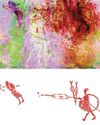
A Very Close Encounter
New research has shown that human figures painted in red on a rock art panel in central Montana depict individuals engaged in a life-or-death encounter during an especially fraught historical moment.
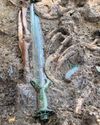
A Sword for the Ages
A zigzag pattern, now tinged with the green-blue patina of oxidized metal, adorns the octagonal hilt of a rare sword dating to the Middle Bronze Age in Germany (1600-1200 B.C.) that was recently excavated in the Bavarian town of Nördlingen.
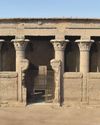
Ancient Egyptian Astrology
For centuries, layers of soot have coated the ceilings and columns in the entrance hall of Egypt's Temple of Esna. Now, an Egyptian-German team of researchers, led by Hisham El-Leithy of the Egyptian Ministry of Tourism and Antiquities and Christian Leitz of the University of Tübingen, is restoring the temple's vibrant painted reliefs to their original brilliance.
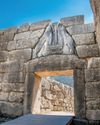
BRONZE AGE POWER PLAYERS
How Hittite kings forged diplomatic ties with a shadowy Greek city-state
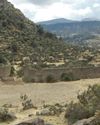
RITES OF REBELLION
Archaeologists unearth evidence of a 500-year-old resistance movement high in the Andes

Secrets of Egypt's Golden Boy
CT scans offer researchers a virtual look deep inside a mummy's coffin

When Lions Were King
Across the ancient world, people adopted the big cats as sacred symbols of power and protection

UKRAINE'S LOST CAPITAL
In 1708, Peter the Great destroyed Baturyn, a bastion of Cossack independence and culture

LAPAKAHI VILLAGE, HAWAII
Standing beside a cove on the northwest coast of the island of Hawaii, the fishing village of Lapakahi, which is surrounded by black lava stone walls, was once home to generations of fishers and farmers known throughout the archipelago for their mastery of la'au lapa'au, or the practice of traditional Hawaiian medicine. \"

A MORE COMFORTABLE RIDE
Although the date is much debated, most scholars believe people 5,000 years ago. For thousands of years after that, they did so without saddles. \"In comparison with horse riding, the development of saddles began relatively late, when riders began to care more about comfort and safety in addition to the horse's health,\" says University of Zurich archaeologist Patrick Wertmann.